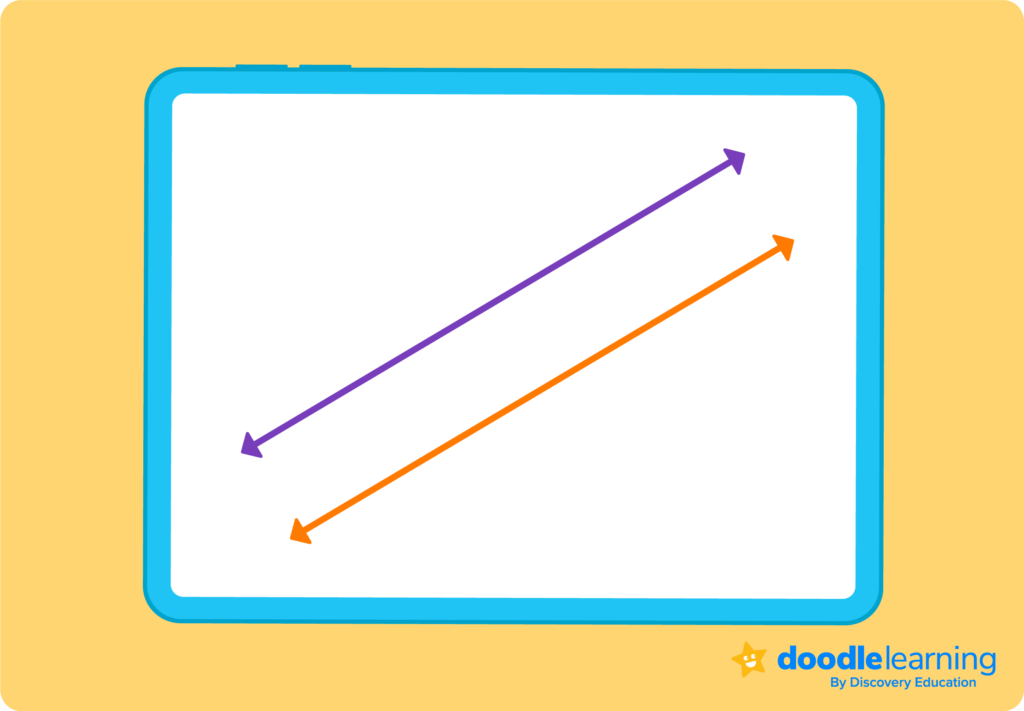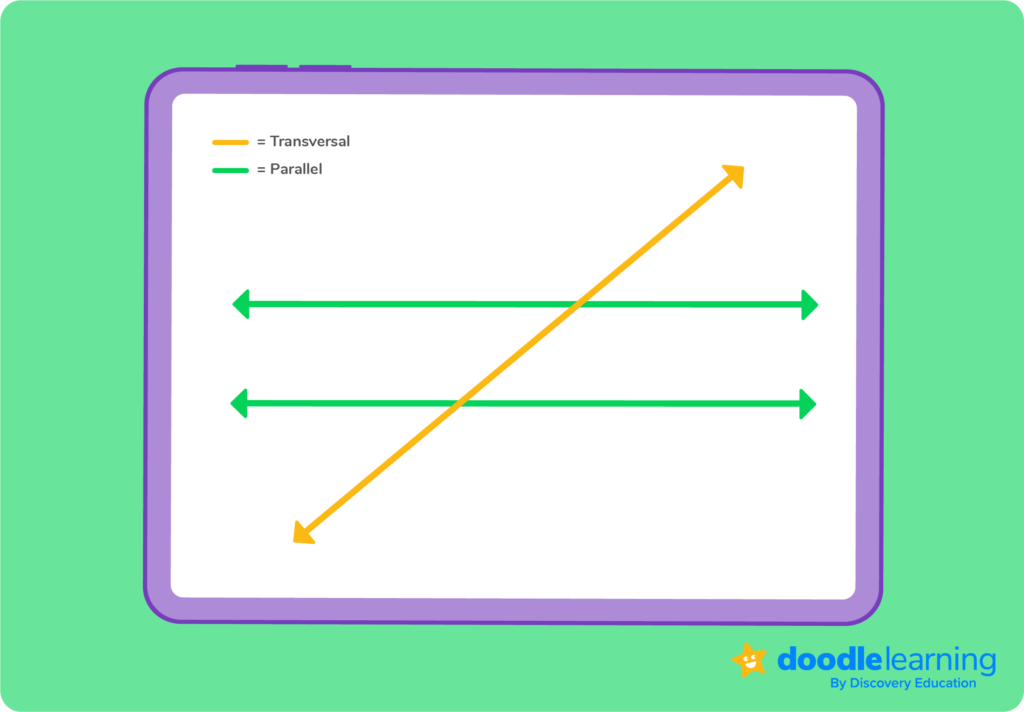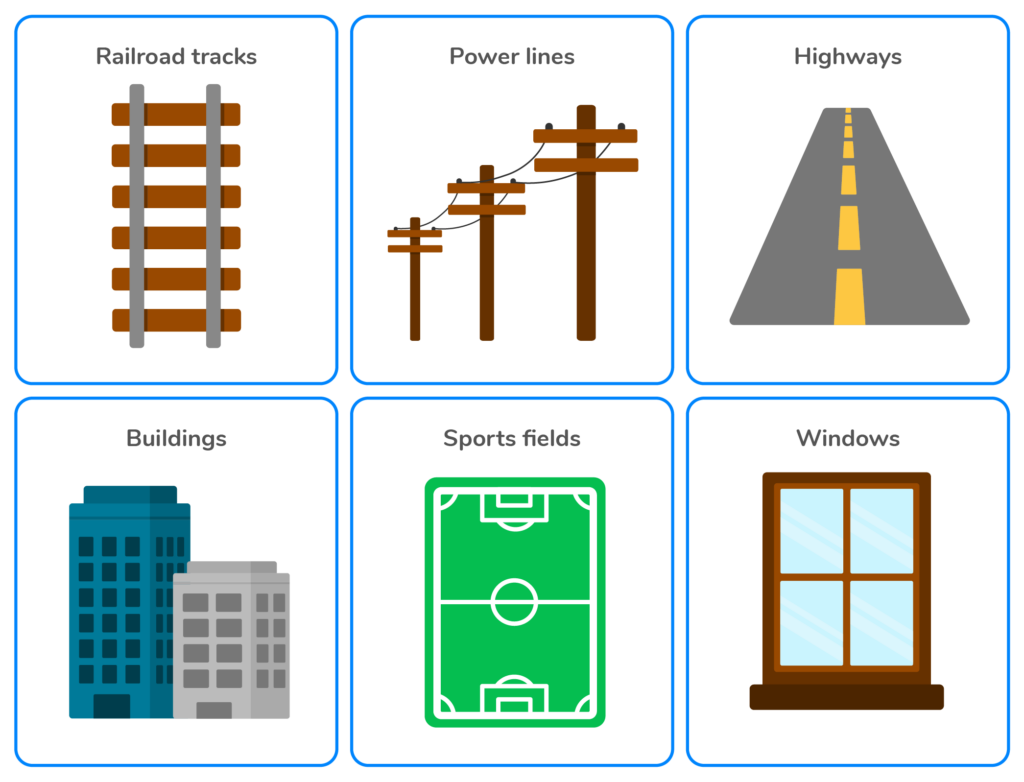

Parallel lines are an important concept in geometry that we see everywhere we look in everyday life. Learn the definition of parallel lines and how we use them in math.

Author
Christine
Published
October 10, 2023


Parallel lines are an important concept in geometry that we see everywhere we look in everyday life. Learn the definition of parallel lines and how we use them in math.

Author
Christine
Published
October 10, 2023


Parallel lines are an important concept in geometry that we see everywhere we look in everyday life. Learn the definition of parallel lines and how we use them in math.

Author
Christine
Published
October 10, 2023


Key takeaways
Table of contents
Parallel lines are an important concept in geometry that also have many real-world applications. They are lines that never intersect, no matter how far they are extended in either direction.
Here at DoodleLearning, we’re experts at making math easy. In this article, we’ll tell you everything you need to know about parallel lines, how to identify them, and how they are used in the real world.
Parallel lines are two or more lines that are always the same distance apart and never intersect, even if they are extended infinitely in both directions.
They are always equidistant and run in the same direction, which means they have the same slope.
These lines are a fundamental in geometry and have many real-world applications. Don’t believe us? Parallel lines are used in architecture, engineering, navigation, and even sports!

Parallel lines look like two straight lines that are always the same distance apart and never intersect, even if they are extended infinitely in both directions. They can be represented by drawing two straight lines side by side with an arrowhead at each end to indicate that they continue infinitely in both directions.
Parallel lines always have the same slope, which means that if you were to draw a perpendicular line to one of the parallel lines, it would intersect the other line at a right angle.
Now that you know what a parallel line is, it’s helpful to know what a transversal is. This type of line intersects two or more other lines at different points. When a transversal intersects two parallel lines, it creates a set of angles like: corresponding angles, alternate interior angles, and alternate exterior angles.
Understanding the properties of transversal lines and the angles they create is essential to solving many geometry problems and applying these concepts in practical, real-life situations.

Parallel lines have several important properties that make them useful in geometry and real-world applications. Some of these properties include:
So what’s next? It’s easy to eyeball parallel lines, but you’ll want to know a way to prove it. To determine that two lines are parallel, you need to demonstrate that they have the same slope and never intersect, no matter how far they are extended in both directions. There are a few proven ways to do this.
One way to prove that two lines are parallel is by using the slope-intercept formula, which is y = mx + b. In this equation, m is the slope of the line and b is the y-intercept. If two lines have the same slope and different y-intercepts, then they are parallel.
Another way to prove that two lines are parallel is by using the transversal theorem, which states that if a transversal intersects two lines and the corresponding angles are congruent, then the lines are parallel.
Additionally, you can also use the alternate interior angles theorem, which states that if a transversal intersects two lines and the alternate interior angles are congruent, then the lines are parallel. These methods are all essential in proving that two lines are parallel and are frequently used in geometry and many other fields.

Look around, and see if you can notice any parallel lines. They’re all around us, every day. Here are a few examples:
These are just a few examples of parallel lines in real life. Parallel lines have many more uses and can be found in many other objects and structures around us.
Now that you know all about parallel lines, what do you want to learn about next? Math doesn’t have to be complicated, it can be fun. DoodleMath can help students and parents build confidence and strengthen their skills across various topics. Interested? Create an account to start your free 7-day trial today.
There are three different types of parallel lines, which include horizontal, diagonal, and vertical.
The opposite of parallel lines is intersecting lines. Intersecting lines are two lines that meet or cross at a single point. Unlike parallel lines, intersecting lines have different slopes, and they intersect at a specific point. Intersecting lines are also known as non-parallel lines, and they can form different angles depending on their intersection.
Different from parallel lines, intersecting lines are commonly found in nature and everyday objects, such as the intersection of roads, branches of trees, scissors, and the edges of geometric shapes.
The symbol for parallel lines is two vertical lines that are placed side by side, just like this: ∥. The symbol is used to indicate that two lines are parallel and will never meet or intersect, no matter how far they are extended in both directions.
If two lines have the same slope and different y-intercepts, then they are parallel. The equation for this is y = mx + b. For example, y = 2x + 1 and y = 2x + 5 represent two parallel lines.


Parents, sign up for a DoodleMath subscription and see your child become a math wizard!

Book a chat with our team
If you’d like to use Doodle’s browser version, please visit this page on a desktop.
To log in to Doodle on this device, you can do so through our apps. You can find out how to download them here: